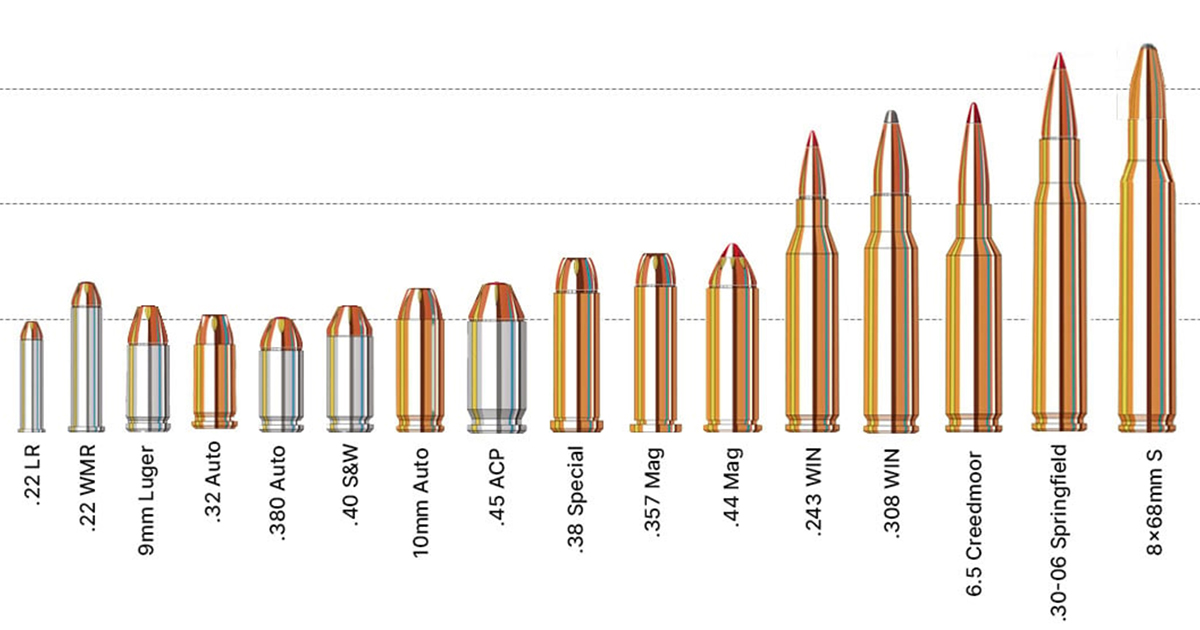Get This Report about Ammunition Pro Llc
Get This Report about Ammunition Pro Llc
Blog Article
How Ammunition Pro Llc can Save You Time, Stress, and Money.
Table of ContentsThe smart Trick of Ammunition Pro Llc That Nobody is DiscussingFacts About Ammunition Pro Llc UncoveredThe Only Guide to Ammunition Pro LlcOur Ammunition Pro Llc DiariesAmmunition Pro Llc Can Be Fun For Anyone
The standard components of ammo are the exact same for rifle, handgun, and shotgun ammunition. Today we're looking at the what the fundamental parts of ammo are and exactly how they work with each other to fire a round.It houses the primer and powder. The bullet is seated outdoors end of the case. When you fire a bullet out of a semi-auto weapon, the gun's extractor raises the case from the shooting chamber and it flies out of the weapon. The instance is also sometimes described as shells, brass, or coverings.
A gun's firing pin strikes a cartridge's primer. The guide is located in the edge of the situation of a rimfire cartridge.
Ammunition Pro Llc for Beginners
Gunpowder following to the case that normally includes it. It is usually a mixture of saltpeter, charcoal, and sulfur.

We call the projectiles for shotshells, which we discharge with shotguns, slugs and shot. A slug is one strong piece, normally made out of lead. Shot is a group of pellets constructed out of lead, steel, bismuth, or tungsten alloy. Shot pellets can come in different sizes and quantities. Since you have a basic understanding of the fundamental parts of ammo, you can really feel a little much more certain in just how your gun and ammo function!.
What Does Ammunition Pro Llc Do?
Stay on top of Special Deals, Breakthrough Notice of Sales, and Shop Occasions
Fun reality: Grains are made use of to explain the mass of a bullet because all the way back in the very early days of firearms, it was a dispenser's system of measurement, and a common denominator was needed to determine just how much result in make use of to make cast lead bullets (Firearm Ammunition). 'Grains' as an unit of action for weight goes all the means back to ancient times, and stands for the weight of a grain of wheat
(https://writeablog.net/ammunitiondde/ammunition-the-foundation-of-your-shooting-experience)For referral, the weight of a paper clip is about 16 gr. So, we know that grains are a step of mass, and extra = much heavier, and heavy is excellent, ideal? Yes, heavy is excellent, however mass of the projectile isn't the only point you need to take into consideration when choosing a round for your firearm.
Ammunition Pro Llc Can Be Fun For Anyone
Fun reality, this is the beginning of the term "Rifle" ex-spouse. The result this spin has on projectiles is a stabilizing one the bullet rotating keeps the nose directed directly, in the same way that a flawlessly spiraled football toss is going to be a lot a lot more secure and exact in trip than an awful duck, end over end throw.
Exactly how does this associate to grain weight? Imagine you're on one of those play ground carousels, the ones with bars you hold on to while it rotates.
Or when it comes to the carnival trip, you begin to really feel much heavier. The even more mass you have (weight), the much more you will certainly feel this result. The very same effect occurs with bullets. The larger the projectile, the more result a quicker rotate will certainly have on it. This is why you tend to see slower twist rates for much heavier, slower projectiles, and quicker twist rates for lighter, greater speed projectiles.
The Of Ammunition Pro Llc
There's another factor that we have to take into consideration when choosing a grain weight for our ammo. As hinted at above, bullet rate, or the speed of the projectile, is a major aspect when establishing the most effective grain weight projectile to use. Speed is impacted by a couple of significant aspects, consisting of the kind and amount of propellant (gunpowder), barrel length, and bullet weight.

One of the most usual grain weight rounds for 9x19mm cartridges are 115gr and 124gr. These are typically lead core, totally jacketed (FMJ) rounds. Both of these grain weight cartridges will certainly do well in manufacturing facility 9mm pistols, to typical gun distances (up to 50 yards). 115 grain rounds are the most typical (and for that reason least pricey).
Report this page